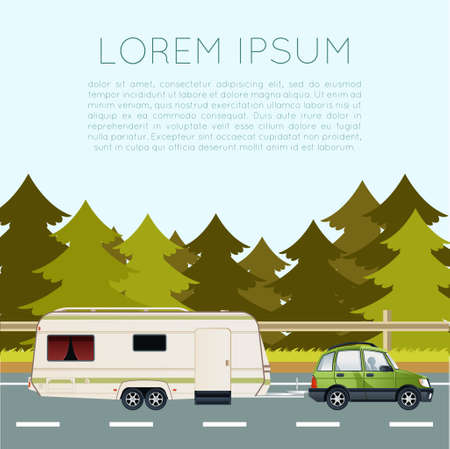Introduction to the Scottish Highlands
Few places in the UK capture the imagination quite like the Scottish Highlands. This vast, rugged region is famed for its dramatic landscapes—think towering munros, shimmering lochs, rolling glens, and mysterious forests. The Highlands offer a truly unique blend of natural beauty and cultural heritage, making it an irresistible destination for anyone seeking an authentic outdoor adventure. Its geography is shaped by ancient geological forces, resulting in varied terrain that invites exploration, whether youre a seasoned hiker or a weekend camper. From misty mountain peaks to wild coastal stretches, every corner of the Highlands promises a sense of discovery and freedom. Here, you’ll find legendary trails winding past historic castles, hidden waterfalls, and welcoming campsites nestled under star-filled skies. For hiking enthusiasts and campers alike, the Scottish Highlands deliver an unparalleled experience—one where tradition meets wilderness and every path offers the thrill of something genuinely Scottish.
Essential Gear for Highland Adventures
When venturing into the Scottish Highlands, being well-prepared is crucial. The weather here is notoriously unpredictable—think four seasons in a day—and the terrain demands kit that’s both robust and versatile. Drawing from years of trekking and camping across Scotland, here’s my practical breakdown of must-have gear, with a nod to trusted UK brands and outdoor know-how.
Recommended Highland Kit List
| Category | Recommended Items | Top UK Brands |
|---|---|---|
| Waterproofs | Breathable waterproof jacket & trousers | Rab, Berghaus, Montane |
| Footwear | Sturdy, waterproof hiking boots (ankle support essential) | Scarpa, Meindl, Salomon |
| Base Layers | Merino wool or technical synthetic tops & leggings | Icebreaker, Rab, Helly Hansen |
| Packing System | Rucksack (30-50L), dry bags for electronics/clothes | Lowe Alpine, Osprey, Vango |
| Navigation & Safety | OS map & compass, headtorch, whistle, first aid kit | Silva, Lifesystems |
| Campsite Essentials | Tent (4-season if winter), sleeping bag (season-appropriate), mat | Vango, Alpkit, Terra Nova |
Practical Tips from Local Experience
- Dress for layers: Temperatures can swing dramatically; multiple thin layers allow you to adapt quickly.
- Midge protection: Midges are infamous in summer—pack Smidge repellent and a head net.
- Brew kit: A lightweight stove and Yorkshire Tea bags are non-negotiable for most Brits!
Sizing Up for Scottish Weather
Don’t underestimate the elements: always check the Mountain Weather Information Service before setting off. Even in June, it’s wise to pack gloves and a beanie. Prioritise kit that dries fast—there’s nothing more miserable than damp gear after a sudden downpour. Invest in gear from local brands when possible; not only are they tailored to UK conditions, but you’ll often get better aftercare and advice from your local outdoor shop.

3. Unmissable Hikes Within Reach of Campsites
If you’re eager to lace up your boots and set off straight from your tent, the Scottish Highlands deliver a treasure trove of iconic trailheads within easy reach of well-loved campsites. Here’s our practical spotlight on some classic routes for every level of adventurer, ensuring you make the most of your Highland stay.
Loch Ness: Mystical Walks for All
Staying near Loch Ness? Don’t just scan the surface for Nessie—venture onto the South Loch Ness Trail. This scenic path is perfect for ramblers, offering gentle gradients and rewarding views over the famous loch. For families or those seeking a shorter wander, try the Dores Beach circuit, ideal for a picnic stop and a dip if you’re feeling brave enough for the chilly water.
Ben Nevis: The Ultimate Challenge
If tackling the UK’s highest peak is on your bucket list, campsites around Fort William put you right at the foot of Ben Nevis. The Mountain Track (often called the Tourist Route) is well-marked but still demands sturdy boots and stamina—it’s a full-day affair with weather that can turn in an instant. For experienced hikers craving more solitude and technical challenge, the Carn Mor Dearg Arete is a spectacular route with dramatic ridge walking and panoramic vistas.
Glencoe: Dramatic Landscapes for Every Walker
Base yourself at one of Glencoe’s atmospheric campsites to access a network of legendary trails. The Lost Valley (Coire Gabhail) walk is a must for intermediate trekkers; this hidden glen offers haunting beauty and fascinating history as you climb between towering peaks. Beginners will enjoy the An Torr Woodland Walk—an enchanting forest loop with viewpoints over Loch Achtriochtan, perfect for capturing postcard-worthy photos.
Practical Tips for All Skill Levels
Beginners: Stick to waymarked paths and consult local rangers or campsite hosts for up-to-date conditions.
Intermediates: Prepare for variable weather by packing layers, waterproofs, and plenty of snacks.
Experienced hikers: Consider lesser-known routes or sunrise starts to beat crowds and experience true Highland solitude.
Whichever adventure you choose, always respect access codes and leave no trace—so these iconic landscapes remain unspoilt for future explorers.
4. Local Camping Culture and Etiquette
When venturing into the Scottish Highlands for hiking adventures, understanding the local camping culture is just as important as choosing your trail. Whether you’re pitching up at a formal campsite or embracing the spirit of wild camping, being mindful of etiquette ensures a positive experience for everyone and helps preserve Scotland’s spectacular landscapes.
Campsite Types: What to Expect
| Type | Description | Facilities |
|---|---|---|
| Organised Campsites | Designated areas with set pitches, often near popular trails | Showers, toilets, electric hook-ups, sometimes small shops or cafés |
| Wild Camping | Camping away from managed sites, typically in remote settings | No facilities – complete self-sufficiency required |
The Spirit of Wild Camping in Scotland
Scotland’s right-to-roam laws permit wild camping on most unenclosed land, but this privilege comes with responsibilities. The Scottish Outdoor Access Code is your guide here: pitch discreetly, stay no more than two or three nights in one spot, and avoid disturbing livestock or wildlife. Always leave your pitch as you found it—“leave no trace” is more than a slogan; it’s an unwritten rule respected by all who love the Highlands.
Unwritten Rules Every Camper Should Know
- Keep noise to a minimum, especially after dusk—many come for peace and solitude.
- Avoid camping too close to other tents unless space is truly limited; privacy is valued.
- If using a bothy (a basic shelter), share fairly and tidy up after yourself.
Respecting Nature and Fellow Adventurers
Littering is never tolerated—take everything back with you, including food waste. Human waste should be buried well away from water sources. Fires are discouraged unless absolutely necessary; use a stove instead. If you encounter others on the trail or at a site, a friendly nod or “hiya” goes a long way—Highland hospitality is warm but not intrusive.
By following these guidelines, you’ll help keep the Highlands beautiful for generations of adventurers to come and enjoy the unique camaraderie that comes from sharing these wild spaces responsibly.
5. Wildlife and Scenery: What to Look Out For
A Practical Guide to Highland Flora and Fauna
The Scottish Highlands are a treasure trove for nature lovers, offering a landscape teeming with distinctive wildlife and lush plant life. As you set off from your campsite, keep your eyes peeled for the elusive red deer—the UKs largest land mammal—often spotted grazing at dawn or dusk on moorland edges. Birdwatchers will be in their element; look skywards for golden eagles soaring above craggy peaks, or listen out for the haunting call of curlews across open glens. Near rivers and lochs, you might glimpse playful otters or even spot a pine marten darting through ancient Caledonian pine forests.
Flora: A Rugged Botanical Haven
The Highlands’ flora is equally impressive. In spring and summer, heather carpets hillsides in vibrant purple hues, while rare alpine plants cling to rocky outcrops. Along woodland trails, ancient Scots pines provide shelter for native species, and wildflowers like bluebells and primroses add colour to the undergrowth. Don’t forget to tread carefully—many areas are Sites of Special Scientific Interest (SSSIs), so it’s important to leave no trace and respect local conservation efforts.
Scenic Highlights Not to Miss
No Highland adventure is complete without taking in its legendary vistas. From the mist-shrouded peaks of Ben Nevis to the mirrored surface of Loch Lomond, the scenery here is simply breathtaking. Make time for iconic viewpoints such as Glen Coe’s dramatic valley or the sweeping panoramas atop Suilven and An Teallach. If you’re lucky enough to camp near the coast, take a stroll at sunset—the interplay of golden light over rugged cliffs and turquoise bays is truly unforgettable.
Whether you’re an avid hiker or a casual camper, embracing the region’s wildlife and scenery adds an extra layer of wonder to your Highland experience. Be prepared with binoculars, a camera, and plenty of curiosity—you never know what you’ll discover just beyond your tent flap.
6. Top Tips for a Smooth Highland Adventure
Embarking on your first hiking and camping trip in the Scottish Highlands? Here’s some practical, tried-and-tested advice to make your adventure seamless and memorable—especially if you’re navigating these iconic landscapes for the first time.
Weather: Expect the Unexpected
The Highlands are notorious for changeable weather. Even in summer, you can experience four seasons in a day. Pack layers, including a waterproof jacket and trousers, and never underestimate the chill brought on by wind and rain. A woolly hat and gloves aren’t just for winter; they’re essential year-round. Keep an eye on the Met Office forecast before heading out each day, but always prepare for sudden showers or mists.
Transport: Getting Around Like a Local
If you’re not driving, research local buses and trains in advance—services can be infrequent, especially outside tourist hotspots. The Citylink coach network covers many popular trailheads but remember to check return times, as missing the last bus could leave you stranded. For flexibility, consider hiring a car or using community-run taxi services, which are common in rural areas. Don’t forget that single-track roads require patience; use passing places courteously and wave thanks to other drivers—a small gesture that goes a long way up north.
Camping Etiquette and Local Quirks
Wild camping is legal in most of Scotland, but with freedom comes responsibility. Pitch your tent away from homes, roads, and livestock, and always follow the Scottish Outdoor Access Code: leave no trace, take all litter with you, and avoid campfires unless permitted. Many Highlanders are friendly but value their privacy—greet locals politely if you pass through farms or villages, but don’t trespass or disturb livestock.
Midge Management
From late spring to early autumn, midges (tiny biting insects) can be relentless at dawn and dusk. Bring a good repellent (many swear by Smidge), wear long sleeves, and consider a head net if you’re particularly sensitive.
Navigation Essentials
Mobile signal is patchy in remote glens. Always carry a paper OS map and compass—and know how to use them. Download offline maps on your phone as backup, but don’t rely solely on technology.
Final Word: Embrace the Adventure
The Scottish Highlands reward those who come prepared. Respect the elements, tread lightly, chat to locals when you can—they often have invaluable tips—and savour every misty summit and quiet lochside evening. With these practical pointers in your rucksack, you’ll be well-equipped for an unforgettable Highland escape on foot and under canvas.


